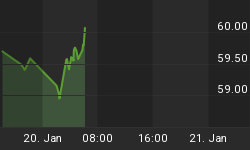Excerpt from Thursday, November 9, 2006.
Signs Of The Times:
"Ghost Towns?"
"In Arizona, 'For Sale' is a sign of the times.
Last year people were standing in line for lotteries and they were camping overnight begging for the next number in the next lot in the next house.
All of a sudden, they just don't show up to close the deal - leaving the deposit."
The reason: "The prospective buyers got cold feet or simply couldn't sell their old home."
Janet Yellen, president of the Federal Reserve Bank of San Francisco, recently described them as "the new ghost towns of the West".
Until recently, the calculation was fairly simple for individual real estate investors.
"You put $5,000 down and you sell it for a $100,000 profit." Sometimes before the paint dried, Mr. Burns said "and then you roll it into 15 more houses". - NY Times, November 6, 2006
'Nuff said
Then, as reported by Financial News Online on November 6:
"Citigroup plans to increase its commodities staff by 48% to double revenues from this business, which it admits it had failed to develop."
"Commodities and structured credit will be the growth sectors for the bank."
The Stock Market seems to be building a magnificent edifice, which reminds of Walpole's comment on the financial markets back in 1782:
"Stocks are no longer the weather glass of fortune, but a part of the mask employed to disguise the nation's own face to itself." - Horace Walpole, (1782) "Letters", Vol. III, p. 143
As noted over the past two weeks, bullish market sentiment is at record levels. Such sentiment is associated with important tops, but is not a precise timing indicator. In the latter regard, the S&P became overbought on October 26 and is testing that condition.
The market could now slip to the lower standard deviation band at around 1350, which would be followed by a 10% rally into the New Year.
To refer to the Walpole observation, the stock market has a bright face, which contrasts with the downcast housing market. Further to our front page account on housing, we hear from a good source that in Michigan "For Sale" signs are being displaced by "Foreclosed".
On Tuesday, the home builder, TOA, plunged 35% to 6.55. The high was 30 in July.
Also telling an interesting story is that the company's debt is trading at 935 bps over treasuries. That is where the high-yield market was in the panic to get out in October, 2002. Now the high-yield is trading at 314 bps over treasuries.
Meanwhile, over at the Daily Bankruptcy News, Bill Rochelle hopes for a brighter turn for the bleak bankruptcy business: "Underemployed turnaround advisors and bankruptcy lawyers were lined up at the LAX departures terminal for the next flight to Fiji. They intend to offer their services to the island's government following news that S&P had lowered the foreign currency rating of the Republic of Fiji Islands by a notch, to B+."
It is worth adding that the government has imposed capital controls to conserve foreign currency reserves.
The downgrades of TOA and Fiji may seem to be isolated events but, to us, they indicate that Mr. Market and Ms. Nature are beginning to ration credit. Although apparently no big deal, it seems that this occasionally formidable tag team is warming up for an inevitable encounter with the Plunge Protection Team.
This brings us to the question about when the house of credit cards fails. As noted last week, we are not sure of the timing of this change, but perhaps an explanation of some of the contrast between the beaming stock market and downcast housing is the favourable seasonal that typically starts in October.
Golds: This sector has been taking measurable moves.
The great rally rushed to a dramatic conclusion on May 11 - three weeks after the gold/silver ratio reversed. The momentum was such that a lengthy correction was inevitable.
Particularly as the top was set by the "dollar down forever" crowd and gold was not (repeat, not) outperforming commodities. Full fury goldbugs are always dangerous to gold investors - either fund managers or mining companies.
Representing real prices, our gold/commodities index had a high in January at 244. Retrospectively, its underperformance was a negative divergence on the ultimate top of the play.
Lately the gold/commodities index has been recovering from the slump down to 164 on October 23. So far, the high has been 180 a couple of days ago. While a good bounce, the low needs testing in order to set the uptrend.
As bad as the decline has been, it is the way markets work in having a cyclical low for gold's real price as stock and base metal markets are completing a cyclical peak.
The advice since late September has been to aggressively buy the dips in the gold sector. The attached chart outlines that a correction would be limited, and that the upside could run to 775.
GOLD
ANY CORRECTIONS WILL BE LIMITED

SOURCE: RossClark@shaw.ca
-
Targeted gold support is $596 to $600.
-
Targeted upside move into late February is $775.
STOCK MARKET AND THE YIELD CURVE

SOURCE: www.Thechartstore.com
-
This is a fundamental approach that suggests a technical label.
-
Note the duration of the run against curve inversion in 1999 - 2000.
-
This could be labeled as a "negative diversion". And it's back.















